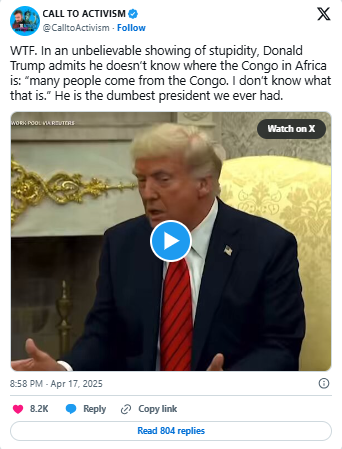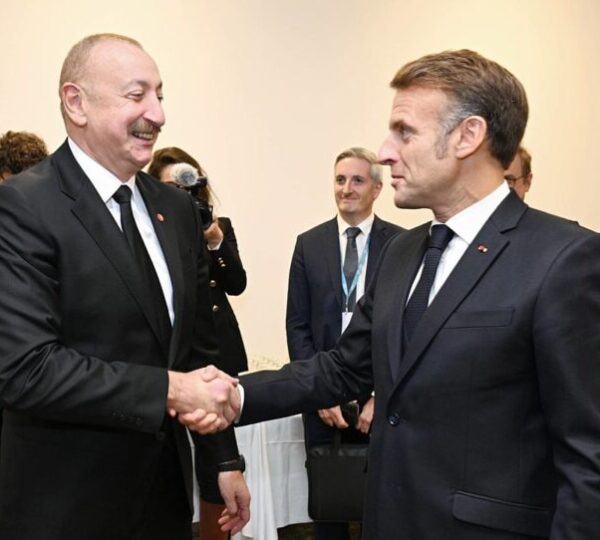They say everyone slips up on geography once in a while — but when you’re a former President of the United States and a front-runner in a new election cycle, the stakes, and the scrutiny, are much higher. That’s exactly what happened recently when Donald Trump, yet again, confused two unrelated countries — this time Albania and Azerbaijan — prompting ridicule from European leaders and raising further concerns about his grasp on global affairs.

Over the years, Trump has become somewhat notorious for his awkward and often inaccurate references to foreign countries. His most recent remarks, however, might have set a new benchmark. The Latest Gaffe: “I Solved Albania and Azerbaijan”. In a recent appearance on Fox News, Trump proudly listed what he claimed were his biggest foreign policy accomplishments — including his role in solving what he described as a long-running conflict between Azerbaijan and… Albania. “I solved wars that were unsolvable. Azerbaijan and Albania, it was going on for many, many years,” Trump stated. “I had the prime ministers and presidents in my office.”
The only problem? Albania and Azerbaijan have never had a conflict. They are geographically distant, culturally different, and politically unconnected in any meaningful dispute. Albania is located in the Balkans region of Southeastern Europe, while Azerbaijan is in the South Caucasus, bordering Armenia, Georgia, Iran, and the Caspian Sea.
His comments baffled foreign policy experts — and amused many European leaders.

The Summit Laugh: Europe Responds with Humor
On October 2nd, during a summit in Copenhagen, several European leaders couldn’t resist making light of the mix-up. According to Politico, Albanian Prime Minister Edi Rama turned to French President Emmanuel Macron and Azerbaijani President Ilham Aliyev with a tongue-in-cheek remark: “You should apologize to us because you didn’t congratulate us on the peace deal that President Trump made between Albania and Azerbaijan.”
The three leaders burst out laughing. Macron, always quick with a political quip, replied with mock seriousness: “I’m sorry for that.” While the moment offered some levity during a serious diplomatic gathering, it also highlighted how world leaders perceive Trump’s repeated factual errors — not only as mistakes, but as material for jokes on the international stage.
A Pattern of Geographic Confusion
This is not the first time Trump has struggled with geography during public speeches or interviews. In fact, his presidency and post-presidency have been marked by a string of similar blunders.
In an earlier public statement, Trump referred vaguely to the African nation of Congo, saying simply: “Many people come from the Congo,” without indicatingwhich of the two Congos (the Republic of the Congo or the Democratic Republic of the Congo) he meant — or showing any understanding of their distinctions.
He also infamously confused Hungary and Turkey, referring to Hungarian Prime Minister Viktor Orbán as “the leader of Turkey,” and suggesting that Hungary borders Russia — a geographical impossibility, as Hungary shares borders with countries like Austria, Slovakia, Romania, and Serbia, but not Russia.
Another memorable moment came when he said “We’re going to Russia” just before a meeting with Russian President Vladimir Putin — a meeting that, in fact, took place in Alaska, according to Politico.

The Real Deal: Azerbaijan and Armenia
To give Trump some credit, his administration did play a role in helping facilitate negotiations between Azerbaijan and Armenia — two nations with a history of conflict, particularly over the Nagorno-Karabakh region, a disputed territory that has been the source of military confrontations since the collapse of the Soviet Union.
In August, Trump hosted both Azerbaijani President Ilham Aliyev and Armenian Prime Minister Nikol Pashinyan at the White House for peace talks aimed at ending nearly four decades of tensions. A draft peace agreement was reportedly reached during that meeting, though the final accord has yet to be formally signed.
Trump spoke enthusiastically about the meeting afterward, describing the atmosphere in emotional and symbolic terms.
“They started off on opposite sides of the Oval Office — so far apart, I didn’t even know you could be so far apart in one room,” he recalled. “But over the course of an hour, they moved closer and closer. By the end, we were all hugging each other.”
While the anecdote may have sounded warm and presidential, it was once again overshadowed by his continued confusion over the names of the countries involved.
Another Misstep on the World Stage
At a joint press conference with UK Prime Minister Keir Starmer not long after, Trump again stumbled through a recap of the peace effort, this time mispronouncing Azerbaijan as “Aber-baijan” and once again bringing Albania into the discussion.
“I’m very disappointed that it hasn’t been settled yet,” Trump said. “To think we solved Aber-baijan and Albania — it went on for years. They were in my office, and we settled it.”
The repetition of the same error, even after being publicly corrected and mocked, left many wondering whether Trump truly understands the complexities of international relations — or even the basic facts.
Harmless Mistakes or Cause for Concern?
To some supporters, Trump’s mix-ups are harmless, human mistakes — the sort of slip-ups any non-career politician might make when dealing with hundreds of countries and complex geopolitical situations. They argue that what matters most is his intention and impact, not the technical details.
However, critics — including many diplomats, academics, and political commentators — argue that repeated factual errors like these are signs of either carelessness or a deeper lack of knowledge that is unfit for someone seeking the highest office in the world once again.
In international diplomacy, words — and names — matter. Getting countries confused is more than just embarrassing. In some cases, it can be diplomatically risky, particularly when tensions between nations are high. For now, the world continues to watch — and sometimes laugh — as Donald Trump makes his way through the global map one mix-up at a time.